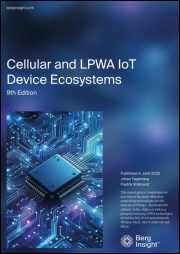
|
시장보고서
상품코드
1593046
세계의 IoT 기기 관리 시장 : 컴포넌트, 배치, 용도별 예측(2025-2030년)IoT Device Management Market by Component (Service, Solution), Deployment (Hybrid cloud, Private cloud, Public cloud), Application - Global Forecast 2025-2030 |
||||||
IoT 기기 관리 시장의 2023년 시장 규모는 47억 4,000만 달러로 평가되었습니다. 2024년에는 57억 1,000만 달러에 이를 것으로 예측되며, 복합 연간 성장률(CAGR) 20.74%로 성장하여, 2030년에는 177억 7,000만 달러에 달할 것으로 예상됩니다.
사물인터넷(IoT) 기기 관리 시장에는 IoT 에코시스템에서 연결 디바이스를 프로비저닝, 관리, 모니터링 및 진단할 수 있는 솔루션이 포함되어 있습니다. 제조업, 스마트홈 등 산업에서 IoT 디바이스의 급증으로 인해 효율적이고 안전한 관리 솔루션에 대한 수요를 창출하고 있습니다. 케이션은 완벽한 디바이스 통합, 펌웨어 업데이트, 엔드포인트 보안을 용이하게 하는 기술이며, 업종에 관계없이 업무 효율과 데이터 무결성을 확보하기 위해 중요합니다. 유틸리티, 스마트 시티 인프라 등의 섹터를 다루며 상호 연결된 장치의 운영상의 이점이 혁신적인 영향을 미칩니다.
| 주요 시장 통계 | |
|---|---|
| 기준년(2023) | 47억 4,000만 달러 |
| 예측년(2024) | 57억 1,000만 달러 |
| 예측년(2030) | 177억 7,000만 달러 |
| 복합 연간 성장률(CAGR)(%) | 20.74% |
시장 성장의 주인은 다양한 분야에서의 IoT 도입 증가, 데이터 생성량의 급증, 사이버 보안 의식의 높아짐입니다.에서 시장 확대를 더욱 뒷받침합니다. 또한 제조업 등의 업계에서는 원격 감시 및 예지보전 솔루션 수요가 급증 하지만 IoT 기기 관리 제공업체에게 유리한 기회가 생겨나고 있지만, 상호 운용성 문제, 초기 도입 비용의 높이, 규제 상황의 진화와 같은 과제는 시장의 성장을 방해할 수 있습니다. 기업은 표준화 노력과 비용 효율적인 솔루션 개발을 통해 이러한 제약을 해결해야합니다.
탐구해야 할 혁신적인 영역에는 에지 컴퓨팅의 통합이 포함됩니다. AI와 머신러닝을 활용한 예측 분석도 중요한 성장 분야이며, 프로액티브한 기기 관리와 보안 강화를 가능하게 합니다. 우리는 지속적인 혁신과 민첩한 적응이 필요하다는 것을 암시합니다. 템에서 더 나은 포지션을 구축할 수 있습니다. 수 있습니다.
시장 역학 : 빠르게 진화하는 IoT 기기 관리 시장의 주요 시장 인사이트 공개
IoT 기기 관리 시장은 수요 및 공급의 역동적인 상호작용을 통해 변모를 이루고 있습니다. 새로운 비즈니스 기회를 얻는 데 도움이 될 수 있습니다. 이러한 동향을 종합적으로 파악함으로써 기업은 정치적, 지리적, 기술적, 사회적, 경제적인 영역에 걸친 다양한 리스크를 경감할 수 있음과 동시에 소비자 행동과 그것이 제조 비용과 구매 동향에 미치는 영향을 보다 명확하게 이해할 수 있습니다.
- 시장 성장 촉진요인
- 통신, 네트워크 기술의 보급 확대
- 모든 산업 분야에서 IoT 솔루션 채택 확대
- IoT 기술에 대한 정부 및 민간 투자 증가
- 시장 성장 억제요인
- 통일된 IoT 표준의 부재
- 시장 기회
- 클라우드 기반 기기 관리 플랫폼에 대한 수요 증가
- 기업에서의 BYOD와 CYOD의 채용 증가
- 시장의 과제
- 데이터 보안 및 개인 정보 보호에 대한 우려
Porter's Five Forces : IoT 기기 관리 시장을 탐색하는 전략 도구
Porter's Five Forces Framework는 시장 상황 경쟁 구도를 파악하는 중요한 도구입니다. Porter's Five Forces Framework는 기업의 경쟁을 평가하고 전략적 기회를 탐구하는 명확한 기술을 설명합니다. 이 프레임워크는 기업이 시장 내 세력도를 평가하고 신규 사업의 수익성을 결정하는 데 도움이 됩니다. 더 강인한 시장에서 포지셔닝을 보장 할 수 있습니다.
PESTLE 분석 : IoT 기기 관리 시장에서 외부로부터의 영향 파악
외부 거시 환경 요인은 IoT 기기 관리 시장의 성과 역학을 형성하는데 매우 중요한 역할을합니다. 정치적, 경제적, 사회적, 기술적, 법적, 환경적 요인 분석은 이러한 영향을 탐색하는 데 필요한 정보를 제공합니다. PESTLE 요인을 조사함으로써 기업은 잠재적인 위험과 기회를 더 잘 이해할 수 있습니다. 이 분석을 통해 기업은 규제, 소비자 선호, 경제 동향의 변화를 예측하고 앞으로 예상되는 적극적인 의사 결정을 할 준비를 할 수 있습니다.
시장 점유율 분석 IoT 기기 관리 시장 경쟁 구도 파악
IoT 기기 관리 시장의 상세한 시장 점유율 분석을 통해 공급업체의 성과를 종합적으로 평가할 수 있습니다. 명 부드럽게 할 수 있습니다.이 분석은 시장 집중, 단편화 및 통합 동향을 명확히하고 벤더는 경쟁이 치열 해짐에 따라 자사의 지위를 높이는 전략적 의사 결정을 내리는 데 필요합니다. 지식을 얻을 수 있습니다.
FPNV 포지셔닝 매트릭스 IoT 기기 관리 시장에서 공급업체의 성능 평가
FPNV 포지셔닝 매트릭스는 IoT 기기 관리 시장에서 벤더를 평가하는 중요한 도구입니다. 이 행렬을 통해 비즈니스 조직은 공급업체의 비즈니스 전략과 제품 만족도를 기준으로 평가하여 목표에 맞는 충분한 정보를 바탕으로 의사 결정을 내릴 수 있습니다. 네 가지 사분면을 통해 공급업체를 명확하고 정확하게 세분화하여 전략 목표에 가장 적합한 파트너 및 솔루션을 파악할 수 있습니다.
전략 분석 및 권장 IoT 기기 관리 시장에서 성공을 위한 길을 그리기
IoT 기기 관리 시장의 전략 분석은 시장에서의 프레즌스 강화를 목표로 하는 기업에 필수적인 요소입니다. 이 접근법을 통해 경쟁 구도에서 과제를 극복하고 새로운 비즈니스 기회를 활용하여 장기적인 성공을 거둘 수 있는 체제를 구축할 수 있습니다.
이 보고서는 주요 관심 분야를 포괄하는 시장의 종합적인 분석을 제공합니다.
1. 시장 침투 : 현재 시장 환경의 상세한 검토, 주요 기업의 광범위한 데이터, 시장 도달범위 및 전반적인 영향력 평가.
2. 시장 개척도 : 신흥 시장의 성장 기회를 파악하고 기존 분야의 확장 가능성을 평가하며 미래 성장을 위한 전략적 로드맵을 제공합니다.
3. 시장 다양화 : 최근 제품 출시, 미개척 지역, 업계의 주요 진보, 시장을 형성하는 전략적 투자를 분석합니다.
4. 경쟁 평가 및 정보 : 경쟁 구도를 철저히 분석하여 시장 점유율, 사업 전략, 제품 포트폴리오, 인증, 규제 당국 승인, 특허 동향, 주요 기업의 기술 진보 등을 검증합니다.
5. 제품 개발 및 혁신 : 미래 시장 성장을 가속할 것으로 예상되는 최첨단 기술, R&D 활동, 제품 혁신을 강조합니다.
또한 이해관계자가 충분한 정보를 얻고 의사결정을 할 수 있도록 중요한 질문에 대답하고 있습니다.
1. 현재 시장 규모와 향후 성장 예측은?
2. 최고의 투자 기회를 제공하는 제품, 부문 및 지역은 어디입니까?
3. 시장을 형성하는 주요 기술 동향과 규제의 영향은?
4. 주요 벤더의 시장 점유율과 경쟁 포지션은?
5. 벤더 시장 진입, 철수 전략의 원동력이 되는 수익원과 전략적 기회는 무엇인가?
목차
제1장 서문
제2장 조사 방법
제3장 주요 요약
제4장 시장 개요
제5장 시장 인사이트
- 시장 역학
- 성장 촉진요인
- 통신 및 네트워크 기술의 보급 확대
- 모든 산업 분야에서 IoT 솔루션의 도입이 증가
- IoT 기술에 대한 정부와 민간 투자 증가
- 억제요인
- 통일된 IoT 표준의 부족
- 기회
- 클라우드 기반 기기 관리 플랫폼 수요 증가
- 기업에서의 BYOD와 CYOD의 도입 증가
- 과제
- 데이터 보안 및 개인정보 보호에 대한 우려
- 성장 촉진요인
- 시장 세분화 분석
- Porter's Five Forces 분석
- PESTEL 분석
- 정치적
- 경제
- 사교
- 기술적
- 법률상
- 환경
제6장 IoT 기기 관리 시장 : 컴포넌트별
- 서비스
- 매니지드 서비스
- 전문 서비스
- 솔루션
- 데이터 관리
- 네트워크 대역폭 관리
- 실시간 스트리밍 분석
- 원격 모니터링
- 보안 솔루션
제7장 IoT 기기 관리 시장 : 전개별
- 하이브리드 클라우드
- 프라이빗 클라우드
- 퍼블릭 클라우드
제8장 IoT 기기 관리 시장 : 용도별
- 커넥티드 물류
- 디지털 건강
- 스마트 제조
- 스마트 소매
- 스마트 유틸리티
제9장 아메리카의 IoT 기기 관리 시장
- 아르헨티나
- 브라질
- 캐나다
- 멕시코
- 미국
제10장 아시아태평양의 IoT 기기 관리 시장
- 호주
- 중국
- 인도
- 인도네시아
- 일본
- 말레이시아
- 필리핀
- 싱가포르
- 한국
- 대만
- 태국
- 베트남
제11장 유럽, 중동 및 아프리카의 IoT 기기 관리 시장
- 덴마크
- 이집트
- 핀란드
- 프랑스
- 독일
- 이스라엘
- 이탈리아
- 네덜란드
- 나이지리아
- 노르웨이
- 폴란드
- 카타르
- 러시아
- 사우디아라비아
- 남아프리카
- 스페인
- 스웨덴
- 스위스
- 터키
- 아랍에미리트(UAE)
- 영국
제12장 경쟁 구도
- 시장 점유율 분석(2023년)
- FPNV 포지셔닝 매트릭스(2023년)
- 경쟁 시나리오 분석
- 전략 분석과 제안
기업 목록
- Advantech Co. Ltd.
- Amplia Soluciones SL
- Aptiv PLC
- Bosch.IO GmbH
- Friendly Technologies, FTL, Ltd.
- International Business Machines Corporation
- Microsoft Corporation
- Oracle Corporation
- Proximetry, Inc.
- PTC Inc.
- Silicon Laboratories
- Smith Micro Software, Inc.
- Software AG
- Telit Corporate Group
- Zipit Wireless, Inc.
The IoT Device Management Market was valued at USD 4.74 billion in 2023, expected to reach USD 5.71 billion in 2024, and is projected to grow at a CAGR of 20.74%, to USD 17.77 billion by 2030.
The Internet of Things (IoT) Device Management market encompasses solutions enabling the provisioning, administration, monitoring, and diagnostics of connected devices within IoT ecosystems. The necessity for robust IoT device management arises from the proliferation of IoT devices across industries such as healthcare, manufacturing, and smart homes, creating a demand for efficient and secure management solutions. In application, the technology facilitates seamless device integration, firmware updates, and end-point security, critical for ensuring operational efficiency and data integrity across verticals. The end-use scope is extensive, covering sectors like automotive, utilities, and smart city infrastructure, where the operational benefits of interconnected devices yield transformational impacts.
| KEY MARKET STATISTICS | |
|---|---|
| Base Year [2023] | USD 4.74 billion |
| Estimated Year [2024] | USD 5.71 billion |
| Forecast Year [2030] | USD 17.77 billion |
| CAGR (%) | 20.74% |
Market growth is primarily driven by the increasing adoption of IoT across various sectors, burgeoning data generation, and escalating cybersecurity awareness. Cloud computing advancements and 5G deployment further support market expansion by enhancing connectivity and data processing capabilities. Additionally, there's a surge in demand for remote monitoring and predictive maintenance solutions in industries like manufacturing, creating lucrative opportunities for IoT device management providers. However, challenges such as interoperability issues, high initial deployment costs, and evolving regulatory landscapes can impede market growth. Companies must address these limitations through standardization efforts and developing cost-effective solutions.
Innovative areas to explore include edge computing integration, which can process and analyze data closer to the data source, reducing latency and bandwidth usage. Leveraging AI and machine learning for predictive analytics also stands as a significant growth area, enabling proactive device management and security enhancement. The market is characterized by rapid technological change, implying a need for continuous innovation and agile adaptation to capture emerging opportunities. By focusing on interoperability advancement, affordability, and robust security solutions, businesses can better position themselves in an evolving IoT ecosystem. Staying abreast of regulatory developments and engaging in collaborative industry standards can further fortify market positions and drive sustainable growth.
Market Dynamics: Unveiling Key Market Insights in the Rapidly Evolving IoT Device Management Market
The IoT Device Management Market is undergoing transformative changes driven by a dynamic interplay of supply and demand factors. Understanding these evolving market dynamics prepares business organizations to make informed investment decisions, refine strategic decisions, and seize new opportunities. By gaining a comprehensive view of these trends, business organizations can mitigate various risks across political, geographic, technical, social, and economic domains while also gaining a clearer understanding of consumer behavior and its impact on manufacturing costs and purchasing trends.
- Market Drivers
- Increasing penetration of communication and networking technologies
- Growing adoption of IoT solutions in all industrial sectors
- Increasing government and private investments in IoT technology
- Market Restraints
- Absence of uniform IoT standards
- Market Opportunities
- Rising demand for cloud-based device management platforms
- Increasing adoption of BYOD and CYOD among enterprises
- Market Challenges
- Concerns regarding data security and privacy
Porter's Five Forces: A Strategic Tool for Navigating the IoT Device Management Market
Porter's five forces framework is a critical tool for understanding the competitive landscape of the IoT Device Management Market. It offers business organizations with a clear methodology for evaluating their competitive positioning and exploring strategic opportunities. This framework helps businesses assess the power dynamics within the market and determine the profitability of new ventures. With these insights, business organizations can leverage their strengths, address weaknesses, and avoid potential challenges, ensuring a more resilient market positioning.
PESTLE Analysis: Navigating External Influences in the IoT Device Management Market
External macro-environmental factors play a pivotal role in shaping the performance dynamics of the IoT Device Management Market. Political, Economic, Social, Technological, Legal, and Environmental factors analysis provides the necessary information to navigate these influences. By examining PESTLE factors, businesses can better understand potential risks and opportunities. This analysis enables business organizations to anticipate changes in regulations, consumer preferences, and economic trends, ensuring they are prepared to make proactive, forward-thinking decisions.
Market Share Analysis: Understanding the Competitive Landscape in the IoT Device Management Market
A detailed market share analysis in the IoT Device Management Market provides a comprehensive assessment of vendors' performance. Companies can identify their competitive positioning by comparing key metrics, including revenue, customer base, and growth rates. This analysis highlights market concentration, fragmentation, and trends in consolidation, offering vendors the insights required to make strategic decisions that enhance their position in an increasingly competitive landscape.
FPNV Positioning Matrix: Evaluating Vendors' Performance in the IoT Device Management Market
The Forefront, Pathfinder, Niche, Vital (FPNV) Positioning Matrix is a critical tool for evaluating vendors within the IoT Device Management Market. This matrix enables business organizations to make well-informed decisions that align with their goals by assessing vendors based on their business strategy and product satisfaction. The four quadrants provide a clear and precise segmentation of vendors, helping users identify the right partners and solutions that best fit their strategic objectives.
Strategy Analysis & Recommendation: Charting a Path to Success in the IoT Device Management Market
A strategic analysis of the IoT Device Management Market is essential for businesses looking to strengthen their global market presence. By reviewing key resources, capabilities, and performance indicators, business organizations can identify growth opportunities and work toward improvement. This approach helps businesses navigate challenges in the competitive landscape and ensures they are well-positioned to capitalize on newer opportunities and drive long-term success.
Key Company Profiles
The report delves into recent significant developments in the IoT Device Management Market, highlighting leading vendors and their innovative profiles. These include Advantech Co. Ltd., Amplia Soluciones S.L., Aptiv PLC, Bosch.IO GmbH, Friendly Technologies, FTL, Ltd., International Business Machines Corporation, Microsoft Corporation, Oracle Corporation, Proximetry, Inc., PTC Inc., Silicon Laboratories, Smith Micro Software, Inc., Software AG, Telit Corporate Group, and Zipit Wireless, Inc..
Market Segmentation & Coverage
This research report categorizes the IoT Device Management Market to forecast the revenues and analyze trends in each of the following sub-markets:
- Based on Component, market is studied across Service and Solution. The Service is further studied across Managed Services and Professional Services. The Solution is further studied across Data Management, Network Bandwidth Management, Real-Time Streaming Analytics, Remote Monitoring, and Security Solution.
- Based on Deployment, market is studied across Hybrid cloud, Private cloud, and Public cloud.
- Based on Application, market is studied across Connected Logistics, Digital Health, Smart Manufacturing, Smart Retail, and Smart Utilities.
- Based on Region, market is studied across Americas, Asia-Pacific, and Europe, Middle East & Africa. The Americas is further studied across Argentina, Brazil, Canada, Mexico, and United States. The United States is further studied across California, Florida, Illinois, New York, Ohio, Pennsylvania, and Texas. The Asia-Pacific is further studied across Australia, China, India, Indonesia, Japan, Malaysia, Philippines, Singapore, South Korea, Taiwan, Thailand, and Vietnam. The Europe, Middle East & Africa is further studied across Denmark, Egypt, Finland, France, Germany, Israel, Italy, Netherlands, Nigeria, Norway, Poland, Qatar, Russia, Saudi Arabia, South Africa, Spain, Sweden, Switzerland, Turkey, United Arab Emirates, and United Kingdom.
The report offers a comprehensive analysis of the market, covering key focus areas:
1. Market Penetration: A detailed review of the current market environment, including extensive data from top industry players, evaluating their market reach and overall influence.
2. Market Development: Identifies growth opportunities in emerging markets and assesses expansion potential in established sectors, providing a strategic roadmap for future growth.
3. Market Diversification: Analyzes recent product launches, untapped geographic regions, major industry advancements, and strategic investments reshaping the market.
4. Competitive Assessment & Intelligence: Provides a thorough analysis of the competitive landscape, examining market share, business strategies, product portfolios, certifications, regulatory approvals, patent trends, and technological advancements of key players.
5. Product Development & Innovation: Highlights cutting-edge technologies, R&D activities, and product innovations expected to drive future market growth.
The report also answers critical questions to aid stakeholders in making informed decisions:
1. What is the current market size, and what is the forecasted growth?
2. Which products, segments, and regions offer the best investment opportunities?
3. What are the key technology trends and regulatory influences shaping the market?
4. How do leading vendors rank in terms of market share and competitive positioning?
5. What revenue sources and strategic opportunities drive vendors' market entry or exit strategies?
Table of Contents
1. Preface
- 1.1. Objectives of the Study
- 1.2. Market Segmentation & Coverage
- 1.3. Years Considered for the Study
- 1.4. Currency & Pricing
- 1.5. Language
- 1.6. Stakeholders
2. Research Methodology
- 2.1. Define: Research Objective
- 2.2. Determine: Research Design
- 2.3. Prepare: Research Instrument
- 2.4. Collect: Data Source
- 2.5. Analyze: Data Interpretation
- 2.6. Formulate: Data Verification
- 2.7. Publish: Research Report
- 2.8. Repeat: Report Update
3. Executive Summary
4. Market Overview
5. Market Insights
- 5.1. Market Dynamics
- 5.1.1. Drivers
- 5.1.1.1. Increasing penetration of communication and networking technologies
- 5.1.1.2. Growing adoption of IoT solutions in all industrial sectors
- 5.1.1.3. Increasing government and private investments in IoT technology
- 5.1.2. Restraints
- 5.1.2.1. Absence of uniform IoT standards
- 5.1.3. Opportunities
- 5.1.3.1. Rising demand for cloud-based device management platforms
- 5.1.3.2. Increasing adoption of BYOD and CYOD among enterprises
- 5.1.4. Challenges
- 5.1.4.1. Concerns regarding data security and privacy
- 5.1.1. Drivers
- 5.2. Market Segmentation Analysis
- 5.3. Porter's Five Forces Analysis
- 5.3.1. Threat of New Entrants
- 5.3.2. Threat of Substitutes
- 5.3.3. Bargaining Power of Customers
- 5.3.4. Bargaining Power of Suppliers
- 5.3.5. Industry Rivalry
- 5.4. PESTLE Analysis
- 5.4.1. Political
- 5.4.2. Economic
- 5.4.3. Social
- 5.4.4. Technological
- 5.4.5. Legal
- 5.4.6. Environmental
6. IoT Device Management Market, by Component
- 6.1. Introduction
- 6.2. Service
- 6.2.1. Managed Services
- 6.2.2. Professional Services
- 6.3. Solution
- 6.3.1. Data Management
- 6.3.2. Network Bandwidth Management
- 6.3.3. Real-Time Streaming Analytics
- 6.3.4. Remote Monitoring
- 6.3.5. Security Solution
7. IoT Device Management Market, by Deployment
- 7.1. Introduction
- 7.2. Hybrid cloud
- 7.3. Private cloud
- 7.4. Public cloud
8. IoT Device Management Market, by Application
- 8.1. Introduction
- 8.2. Connected Logistics
- 8.3. Digital Health
- 8.4. Smart Manufacturing
- 8.5. Smart Retail
- 8.6. Smart Utilities
9. Americas IoT Device Management Market
- 9.1. Introduction
- 9.2. Argentina
- 9.3. Brazil
- 9.4. Canada
- 9.5. Mexico
- 9.6. United States
10. Asia-Pacific IoT Device Management Market
- 10.1. Introduction
- 10.2. Australia
- 10.3. China
- 10.4. India
- 10.5. Indonesia
- 10.6. Japan
- 10.7. Malaysia
- 10.8. Philippines
- 10.9. Singapore
- 10.10. South Korea
- 10.11. Taiwan
- 10.12. Thailand
- 10.13. Vietnam
11. Europe, Middle East & Africa IoT Device Management Market
- 11.1. Introduction
- 11.2. Denmark
- 11.3. Egypt
- 11.4. Finland
- 11.5. France
- 11.6. Germany
- 11.7. Israel
- 11.8. Italy
- 11.9. Netherlands
- 11.10. Nigeria
- 11.11. Norway
- 11.12. Poland
- 11.13. Qatar
- 11.14. Russia
- 11.15. Saudi Arabia
- 11.16. South Africa
- 11.17. Spain
- 11.18. Sweden
- 11.19. Switzerland
- 11.20. Turkey
- 11.21. United Arab Emirates
- 11.22. United Kingdom
12. Competitive Landscape
- 12.1. Market Share Analysis, 2023
- 12.2. FPNV Positioning Matrix, 2023
- 12.3. Competitive Scenario Analysis
- 12.4. Strategy Analysis & Recommendation
Companies Mentioned
- 1. Advantech Co. Ltd.
- 2. Amplia Soluciones S.L.
- 3. Aptiv PLC
- 4. Bosch.IO GmbH
- 5. Friendly Technologies, FTL, Ltd.
- 6. International Business Machines Corporation
- 7. Microsoft Corporation
- 8. Oracle Corporation
- 9. Proximetry, Inc.
- 10. PTC Inc.
- 11. Silicon Laboratories
- 12. Smith Micro Software, Inc.
- 13. Software AG
- 14. Telit Corporate Group
- 15. Zipit Wireless, Inc.



















